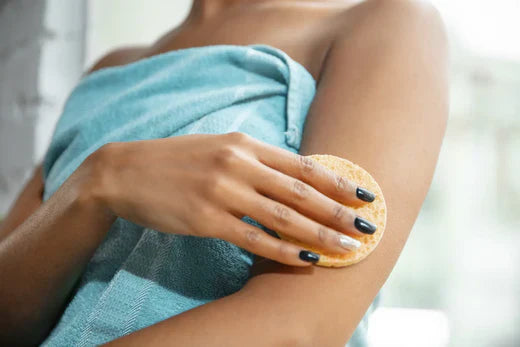Waxing remains one of the most popular hair removal methods in both professional salons and at-home treatments. It's quick, effective, and provides longer-lasting results compared to shaving. However, even seasoned beauticians can experience mishaps during waxing sessions. One of the most common problems is wax sticking stubbornly to the skin, causing discomfort and frustration for both the client and the professional.
Table of Contents
- Introduction
- Common waxing mistakes that lead to wax sticking to the skin
- Immediate steps to take when wax gets stuck on skin
- How to remove different types of wax safely
- Natural remedies for gentle wax removal
- Preventing waxing mishaps in the future
- Best products for wax removal from Black Coral Wax
- Frequently Asked Questions (FAQ)
Introduction
The key to dealing with wax removal issues lies in preparation and knowing the right techniques to remove wax safely. Whether it’s soft wax, hard wax, or leftover wax residue, having a clear plan can make all the difference. This guide will walk you through the best practices to ensure smooth and safe wax removal, as well as recommend top products from Black Coral Wax to make your waxing sessions more efficient.
Common waxing mistakes that lead to wax sticking to the skin
Even minor errors in the waxing process can result in wax sticking to the skin. Understanding the root causes of these mistakes is essential to prevent future issues.
One common mistake is applying wax too slowly or allowing it to dry before removal. Soft wax, in particular, requires swift application and removal with a strip. If the wax is left on the skin for too long, it can harden and become difficult to remove. On the other hand, hard wax may harden too quickly if the room temperature is too cold or the wax isn't applied at the right thickness.
Another issue is applying wax to improperly prepped skin. If the skin is oily or has residue from lotions, the wax may not adhere properly and could leave behind patches that are difficult to remove.
To avoid these problems, always test the wax temperature before applying it to the client’s skin. Ensure the skin is clean, dry, and free of oils or lotions. For hard wax, make sure the application is even and consistent to avoid uneven removal.
Immediate steps to take when wax gets stuck on skin
When wax gets stuck on the skin, it’s important to remain calm and handle the situation with care. Forceful pulling or scraping can irritate the skin, causing redness or even small tears. Here’s what to do instead.
First, reassure your client that everything is under control. Explain that wax sticking to the skin is a common issue that can be resolved quickly and safely. Assess the situation to determine if the wax is soft, hard, or partially dried.
For soft wax, apply a fresh strip over the remaining wax, press firmly, and quickly pull it off in the opposite direction of hair growth. If this doesn’t work, use a small amount of post-wax oil or baby oil to loosen the wax, gently rubbing it in circular motions with a cotton pad.
For hard wax, try warming the wax slightly with a clean strip or warm compress to soften it. Once softened, peel back the wax slowly, using your fingers or a wooden spatula to lift it gently. Never scrape hardened wax off the skin, as this can cause micro-tears.
How to remove different types of wax safely
Different types of wax require different removal methods to avoid causing irritation or discomfort.
Soft Wax (Strip Wax)
Soft wax is commonly used for larger areas like legs and arms. However, it can leave residue if not applied and removed correctly. If soft wax gets stuck, apply a fresh strip over the remaining wax and pull it off quickly. If residue persists, apply post-wax oil or baby oil to the area and wipe it off with a cotton pad.
Hard Wax (No-Strip Wax)
Hard wax is better suited for smaller, more sensitive areas like the face, underarms, and bikini line. If hard wax hardens too quickly or won’t lift cleanly, gently warm the wax using a clean strip or warm compress. Apply a small amount of wax remover oil to loosen the edges, then peel the wax back slowly.
Natural remedies for gentle wax removal
For salons that prefer using natural alternatives, oils like coconut oil, olive oil, and mineral oil are excellent for removing wax without causing irritation. Simply apply a few drops of oil to the affected area, let it sit for a minute, and then gently wipe away the wax with a soft cloth.
A warm water compress can also help soften hardened wax before removal. Soak a clean washcloth in warm water, apply it to the area, and gently wipe off the softened wax. Aloe vera gel is another natural remedy that not only helps with wax removal but also soothes the skin afterward.
Preventing waxing mishaps in the future
Preventing wax mishaps is always better than fixing them afterward. To minimize the risk of wax sticking to the skin, make sure you’re using the right type of wax for each area.
Soft wax is ideal for larger, less sensitive areas like the legs, while hard wax is better suited for sensitive areas like the bikini line or underarms. Maintaining proper wax temperature is also crucial. Always test the wax on your wrist before applying it to ensure it’s not too hot or too cold.
Additionally, preparing the skin thoroughly before waxing can help prevent issues. Cleanse the skin with an alcohol-free cleanser, ensure it’s completely dry, and avoid using oils or lotions before waxing. Regular training sessions for salon staff can also help reduce the likelihood of waxing mishaps.
Best products for wax removal from Black Coral Wax
Using high-quality wax products can make all the difference in ensuring a smooth waxing experience. Here are some top recommendations from Black Coral Wax:
-
Black Coral Wax – Professional Hard Wax
This professional hard wax is designed to melt at a low temperature, making it gentle on the skin and reducing the risk of irritation. It’s perfect for sensitive areas like the bikini line and face, providing a comfortable waxing experience for clients. -
Clear MaeMae Wax – Hypoallergenic Hard Wax
For clients with sensitive skin, this hypoallergenic hard wax is a must-have. It’s free from fragrances and dyes, reducing the risk of allergic reactions. It’s especially effective for facial waxing and Brazilian treatments. -
Plumeria Professional Hard Wax
Infused with a delicate floral scent, the Plumeria Hard Wax is highly flexible and removes even the finest hairs without breaking. It’s a great choice for both large areas like legs and smaller, sensitive areas.
Frequently Asked Questions (FAQ)
1. What’s the safest oil to remove wax from the skin?
Coconut oil, olive oil, and baby oil are all safe and effective for gently removing wax without causing irritation.
2. Can I use soap and water to remove wax residue?
No, soap and water are not effective for removing wax. Oils work much better at breaking down the wax and loosening it from the skin.
3. What do I do if wax won’t come off after multiple attempts?
Apply more oil to the affected area and let it sit for a few minutes. Use a soft cloth to gently wipe off the wax.
4. How do I prevent wax from drying too quickly on the skin?
Ensure the wax is at the correct temperature and work efficiently during application to prevent it from hardening too quickly.
5. Are there products specifically designed for wax removal?
Yes! Post-wax oil from Black Coral Wax are specifically formulated to gently remove wax residue while soothing the skin.






